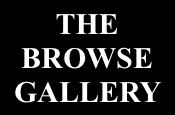
Günter Zint has been one of the most important German press and documentary photographers for 5 decades. He has worked for numerous magazines and newspapers such as Spiegel, Stern, Quick, Twen, Konkret etc. and has published over 60 illustrated books to date. His photographs are documents of contemporary history that are exhibited in many museums today.
From the 1968 student riots in Paris and the APO in Berlin and West Germany, to the anti-nuclear protests in Brokdorf and the opening of the GDR border in 1989 - Günter Zint captured all the important epochs of post-war history with his camera. His exhibition "25 Jahre Mauerfall" 2014 in the Browse Gallery showed a selection of pictures of the GDR border opening.
Zint likes to call himself a "utility photographer" who "steals" his pictures along the way and on the fringes of society.
His love of subculture and his early fame began with the founding of the photo agency Panfoto, which photographed young rock musicians like Jimi Hendrix, Doors, and many others. His pictures of the Beatles in the recently opened STAR CLUB in his chosen neighborhood of St. Pauli, which he later opened his own museum, are legendary.
His pictures have become icons of new beginnings for several generations, who have lost nothing of their fascination even decades later. More pictures and info on Zint's Panfoto Archive.
Günter Zint has been photographing for over fifty years. His first publication was in the Fuldaer Zeitung in 1953. From 1959 he trained as a photo editor at the German Press Agency (dpa).
In the sixties he worked for the magazines Twen, Quick and SPIEGEL. He also founded the photo agency PANFOTO, whose main subject at that time was music photography. Thus he took many photos of artists like the Beatles, Jimi Hendrix, the Doors and many others. In short: "From ABBA to ZAPPA".
In May 1962, the newly opened STAR CLUB attracted him to St. Pauli. At first, coming from conservative Fulda, he was frightened by the "Kiez". But after he got to know some of the workers from the neighbourhood, the district didn't let him go. This was reflected in half a dozen illustrated books about Hamburg's most famous district, St. Pauli.
At the end of the 60s Günter Zint was a photojournalist at the 68er demonstrations, founded the legendary "St. Pauli-Nachrichten", and lived in the APO-Press-Kommune.
In the 70s and 80s, he documented the police operations at the demonstrations and major rallies of the "Anti-Nuclear Power Movement". Günter Zint was also active as a documentary photographer during the construction of the nuclear waste interim storage facility in Gorleben and the previous construction of the "Republic of Free Wendland".
A total of 59 illustrated books by Günter Zint on various topics have been published to date, Volume 60 is currently in progress.
Zint has always photographed from the opposite perspective. High culture and the official "rulers" were often a must for him as a press photographer, but for him the freestyle was always the subculture that swam against the current and the people who served the established media only as "citizen fright". Zint likes to call himself a "commercial photographer" who "steals" his pictures along the way and on the edge of society.
Since 1962 he has also collaborated with Günter Wallraff and has illustrated almost all of his books.
Since 2011 he has lived in a village of 150 souls near Stade.
(Text: Günter Zint)
8. Mai 2007 bis April 2008 - Bonner Haus der Geschichte, Wilde Zeiten
August bis Oktober 2007 - Vonderau Museum Fulda, Ausstellung Der Fotograf Günter Zint
November 2007 bis Januar 2008 - Oldenburger Landesmuseum, Querschnitt durch Zints Lebenswerk (160 Fotografien).
Die Ausstellung Wilde Zeiten wandert seit 2008 durch Deutschland. Drei weitere Ausstellungen wandern seit 2007 weltweit.
2011 - Berlin Fotofestival The Browse, Wilde Zeiten
2012 - Berlin Fotofestival The Browse, Zintstoff (zum gleichnamigen Fotobuch)
2013 - Im Mai wurde die Ausstellung Wilde Zeiten in Udine (Italien) gezeigt.
2014 Oktober-November - Browse Gallery, Marheineke Markthalle, 25 Jahre Mauerfall. Wie ich als Pressefotograf die DDR-Grenzöffnung erlebte, i.R. des Monats der Fotografie Berlin 2014.

 Deutsch
Deutsch  English
English